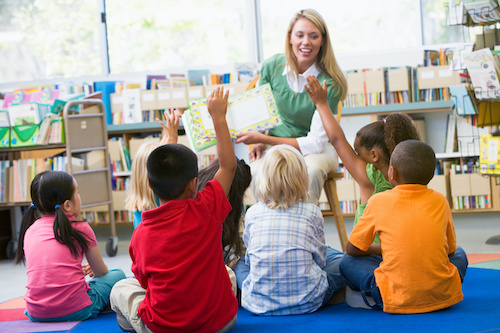Ensuring that children are developmentally ready for school on day one of kindergarten is critical. The better prepared children are for kindergarten, the more successful they are likely to be in their school experience.
Kindergarten readiness involves more than just a child’s age and academic abilities. It also encompasses social-emotional competencies, including whether children can follow directions, regulate their own emotions, and get along well with others.
As a former principal for a large urban school district who has opened an early childhood center with more than 400 children, I have extensive experience in preparing children for kindergarten and working with parents to do the same. Here are three key steps that school systems can take to ensure that all children have the solid foundation they need to start kindergarten ready to learn with their peers.
1. Implement a prekindergarten curriculum that addresses all of the developmental domains required for success
Adopting a Pre-K curriculum that encompasses all the domains of early learning is crucial for getting children ready for kindergarten.
According to the U.S. Department of Health and Human Services’ Early Childhood Learning & Knowledge Center, the central domains for early learning and development from birth to age five that are essential for school and long-term success are:
- Approaches to Learning, including creativity, curiosity, and initiative;
- Social and Emotional Development, including self-regulation, impulse control, attachment, independence, and cooperation;
- Language and Literacy, including phonological awareness, letter and word recognition, vocabulary, and comprehension;
- Cognition, including reasoning, problem solving, and scientific inquiry; and
- Perceptual, Motor, and Physical Development, including gross and fine motor skills, health, safety, and nutrition.
All of these areas are interrelated, and all factor into a child’s success. Without self-control, for instance, children simply can’t focus on learning. Without dexterity and coordination, children will lack the ability to control a pencil, stack blocks, or sort shapes. A high-quality preschool curriculum includes activities that cover all of these domains to ensure that children are fully ready to learn.
2. Provide opportunities for children to develop important social-emotional skills and build healthy, positive relationships with their classmates
Children’s social-emotional competency is just as important for their success in kindergarten as their cognitive skills. Pre-K programs should incorporate social-emotional learning strategies that promote self-regulation and independence, as well as strategies that foster healthy connections between children, their peers, and adults.
For instance, preschool programs should establish rituals to help build a connected school family. For example, children can start each day the Brain Smart way, learning a four-part routine that includes bringing all the scattered energy together with a Uniting activity. Disengaging stress with a calming activity, learning to connect with each other through a connective activity and creating a commitment or promise to be a helpful member of the school family fosters a safe, positive classroom environment.
3. Engage with parents and offer resources and activities to help them prepare their children for the kindergarten experience
Parents and caregivers are important partners in their children’s education. However, many parents might not be familiar with techniques they can use to aid in their child’s development. Sharing specific resources and strategies that parents can use at home can help them better prepare their child for kindergarten.
The National Association for the Education of Young Children (NAEYC) provides tips to help get children ready for kindergarten, such as how to foster independence at home, acquire self-help skills, and engage in meaningful literacy activities. Many state education departments have published guides for families as well.
Ensuring that all children start kindergarten ready to learn is a wise investment that will pay huge dividends for school systems. By following these three steps, early childhood leaders can give young children the right foundation for a lifetime of success.
Related:
Implementing STEAM projects in PreK and kindergarten classrooms
- 3 ways to avoid summer learning loss - April 19, 2024
- High school students say AI will change the workforce - April 18, 2024
- Motivating students using the Self-Determination Theory - April 17, 2024


